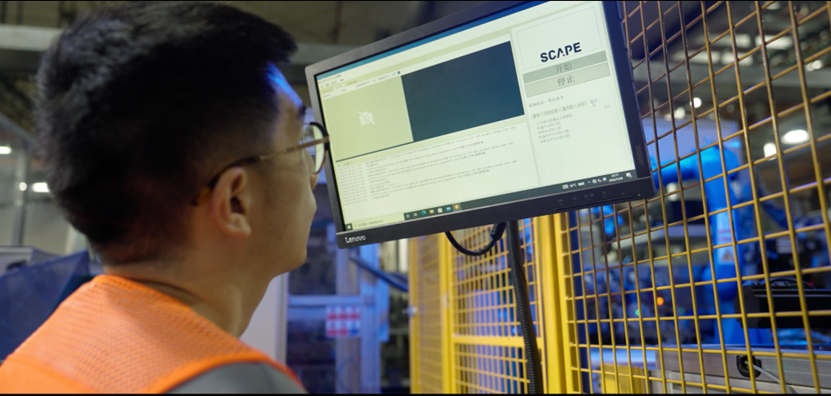Robots Taking Over Dangerous Jobs: Revolutionizing Workplace Safety
June 06th, 2023

by Bogdan Tintescu, Marketing Assistant, Scape Technologies
Introduction
In this article, we explore the transformation that is taking place in hazardous work environments as robots take center stage. At Scape Technologies, we recognize the great potential of robotics to revolutionize the workforce and make dangerous jobs significantly safer. As leaders in the field of bin-picking, we aim to explore the advancements and benefits of integrating robots into high-risk industries. Join us as we embark on a journey into the future, where human-robot collaboration brings about unprecedented safety and efficiency.
The Evolution of Robotics in Dangerous Jobs
Over the years, robotics has remarkably progressed, enabling breakthroughs that were previously unimaginable. With advancements in artificial intelligence, machine learning, and robotics engineering, we are witnessing a significant shift in how dangerous jobs are performed.
A Safer Environment Through Automation
Automation plays a pivotal role in safeguarding human lives by reducing exposure to life-threatening situations. Robots, equipped with complex sensors and algorithms, can carry out tasks that pose significant risks to human workers. By assuming these hazardous responsibilities, robots allow us to create safer work environments while ensuring maximum productivity.
Enhanced Precision and Efficiency
Robots possess a level of precision and accuracy that surpasses human capabilities. In high-risk industries such as manufacturing, construction, and welding, where precision is crucial, robots are valuable assets. Their accuracy minimizes errors, preventing potential disasters and improving overall efficiency.
Industries Transformed by Robotic Intervention
Let us now explore how various industries are benefiting from the integration of robots, transforming once dangerous jobs into safer, more efficient processes.
Manufacturing Industry
The manufacturing sector has embraced robotics wholeheartedly, recognizing its potential to optimize production lines and safeguard workers. Robots have revolutionized tasks such as heavy lifting, assembly line operations, and hazardous material handling. With their consistent precision and tireless work ethic, robots ensure quality while mitigating the risks associated with human error and physical strain.
See how our SCAPE Bin-Picker was integrated in the BMW factory in Leipzig:
Construction Sector
In the construction industry, where workers often face dangerous heights, heavy machinery, and hazardous materials, robots are guiding a new era of safety. Drones equipped with cameras and sensors facilitate aerial inspections, reducing the need for humans to undertake risky tasks. Additionally, robotic exoskeletons assist workers in lifting heavy loads, minimizing the likelihood of musculoskeletal injuries.
Welding Industry
With their consistent precision and tireless work ethic, robots have transformed welding tasks, ensuring quality while mitigating the risks associated with human error and physical strain. From intricate welds to heavy-duty applications, robots have become indispensable in achieving higher productivity and efficiency in the welding process. They not only enhance the speed and accuracy of welding operations but also enable the execution of complex welding patterns with ease. By taking on the burden of repetitive and physically demanding tasks, robots free up human workers to focus on more creative and analytical aspects of the manufacturing process.
Conclusion
While it is evident that robots are revolutionizing dangerous jobs, it is crucial to emphasize that human involvement remains essential. Rather than replacing humans, robots act as capable allies, enhancing our capabilities and safeguarding us from harm. Human-robot collaboration opens up a new dimension of possibilities, where workers can focus on complex decision-making, creativity, and problem-solving, while robots handle repetitive or dangerous tasks.
Make sure you follow our social media channels to stay updated on the latest happenings. (LinkedIn, Facebook, Instagram, Twitter)
